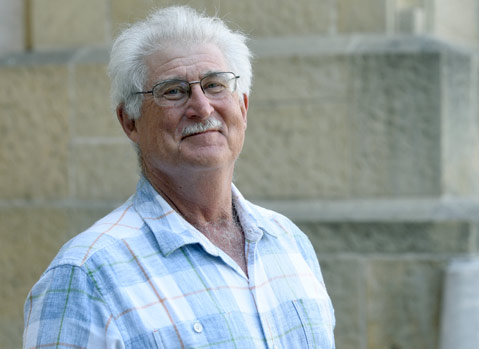The Virtues of Impact Investing
Antioch University Conference Will Focus on Socially Conscious Investing

After becoming disillusioned with the financial model and ineffectiveness of so many of the nonprofits around him, Peter Brill stumbled upon an investment alternative that is now beginning to make its way into the mainstream. Brill, a retired psychiatrist, UPenn professor, and business owner, is bringing impact investing out into the Santa Barbara sunshine.
Part of the same larger philosophy of “conscious capitalism,” social entrepreneurship, and “social return on investment,” impact investing places money in initiatives, organizations, companies, and funds meant to produce an appreciable and beneficial social impact — along with a financial return.
Brill, who became interested in impact investing after retiring to Santa Barbara and getting involved in the nonprofit scene, wanted to bring the financial practice to the forefront of area investors’ and philanthropists’ attention. “Nonprofits are wonderful, wonderful organizations; they do a lot of good,” he told me. “The philanthropy that underlies them is very important. … But as change agents, they don’t work very well. And by and large, they tend to sometimes stabilize a problem, but not necessarily resolve it.”
So in an effort to educate the community, Brill organized an impact-investment conference for May 20 at Antioch University. The keynote speakers are Maya Chorengel, the cofounder of Elevar Equity, and Charly Kleissner, the cofounder of the KL Felicitas Foundation and Toniic — both of whom are considered to be successful and authoritative figures in the impact-investing world.
Wealthy retirees, philanthropic foundations, venture capitalists, and even government regulators are all targets for the conference and the perfect folks to make socially guided investments, Brill said. With Santa Barbara not unfamiliar with these cohorts, the city became an ideal location to begin spreading the impact investment gospel.
While the average investor may not be familiar with the rapidly growing practice, “somewhere between three quarters of a trillion and two trillion dollars a year are going into impact investing,” said Brill.
One of the biggest names in Santa Barbara’s nascent impact investment scene is the Hutton Parker Foundation, which puts a considerable portion of its money into purchasing and developing real estate for nonprofits to lease at a reduced rent. The investments give nonprofits a space to conduct their work while providing Hutton Parker a financial return with the continual rent payments.
“Sustainability is a really, really important thing if you really want to produce social change,” Brill said. “And self-sustainability is really important. … Impact investing can create a situation where the business is raising enough money to solve the problem, and not continue to look for more and more grant money. And if the business is profitable enough, then it can start to scale and help even more people.”
Deciding where to invest one’s money is easier said than done. Even with the help of a couple of associates, Brill said it took months to appraise the entire field of impact investment and decide how he should get involved. Determining quantitative parameters for what constitutes beneficial and effective social change isn’t easy and depends on the type of business, who is doing the measuring, and the complexity of the measurement itself. While the benefits and effectiveness of some businesses, such as those providing solar-powered lamps to Sub-Saharan Africa, are fairly straightforward, discretion and subjectivity can still come into play when defining the nature of more complex investments such as a nationwide health-care program.
Despite the ostensible win-win nature of impact investing, the strategy has a formidable hill to climb to win over investors used to traditional styles of investing. “I think the problem is people come out of a certain mindset,” said Brill. “They have this charitable, giving mindset, and to make the jump that maybe they should be using that money — or at least a portion of that money — in a different way to produce change is sometimes a big jump for them. But I think it’s an idea whose time has come, and people are getting more and more interested in it.”
The conference, free to anyone interested, will run 8 a.m.-12:30 p.m. on Friday, May 20, at Antioch University Santa Barbara (602 Anacapa St.). For more info, visit liv sustainablechangealliance.org/impact-investing.



